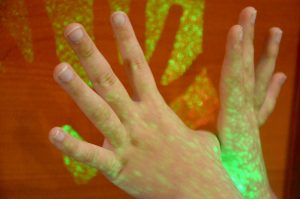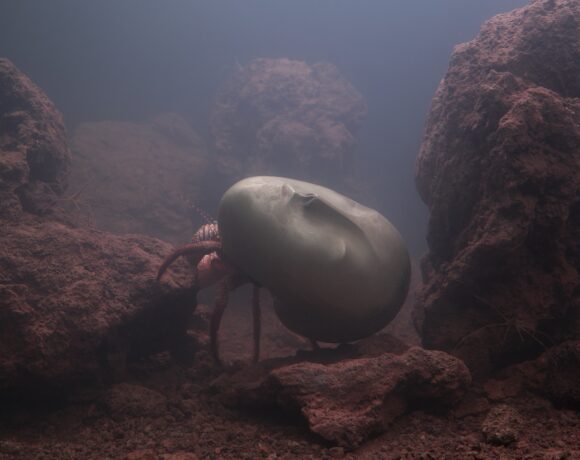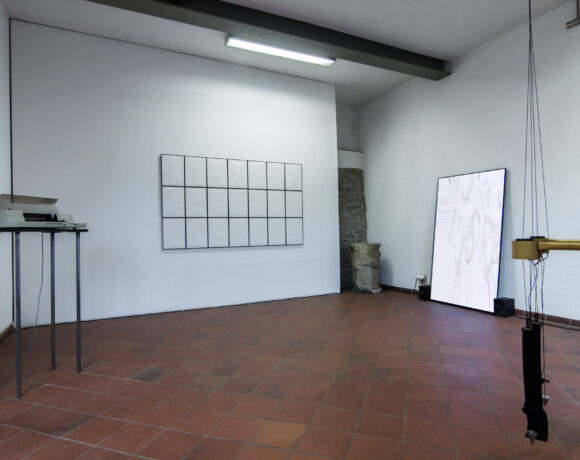The extraordinary socio-economic revolution, which since digital innovation has now involved every aspect of our daily life, has inevitably transformed language codes, value and judgment schemes. Art and artists, in a camaleonic way, evolve according to the surrounding world and are able to take advantage of new social, economic, cultural and political inputs it before others. The inherent fusion of technology in artistic production processes and the hybridisation of digital technology no longer presuppose the material physicality of an artwork, to which the philosopher Walter Benjamin still referred in 1936, but they requires tool and media to enable art to be reproducible and shared, in the name of the democratisation of art and co-construction of knowledge.
In order to use a category expressed by Immanuel Kant in “Kritik der Urteilskraft”, when one is faced with the need to express an aesthetic judgment, he/she uses the feeling, that is the criterion with which he/she refers to the “feeling”. I therefore consider that the ‘feeling of pleasure’, that is the inherent and specific ability of each individual to perceive and give an aesthetic judgment of beauty to an experience, makes it possible to go beyond the visible and the materiality of the work in order to amplify its meaning and content on the basis of subjective contingencies, patterns and criteria. Kant anticipates more than two centuries of the modern concept of metaverse, that is being able to participate and enjoy an amplified reality experienced by co-constructing sense, using one’s own senses and feelings. Paradoxically, although subjective, aesthetic beauty becomes universal when the categories of judgment are shared. This is precisely the point: the constant social changes bring about a radical change in language codes and interpretation schemes, shared by a user, which is also a perpetual transformation and which takes them into account mostly on a passive basis.
From multimedia installations in museums, to the implementation of 3D apps for the virtual enjoyment of artistic and architectural goods, to the new achievements proposed by digital art, today the paradigms of all forms of art, thanks to technology, contaminate languages to create a new aesthetic that is open to an increasingly wide audience looking for new immersive and interactive experiences. Ways and strategies of enjoyment change, spaces, times are redefined and, in the theatre, there is almost a tacit fiction agreement that assures that the intangible is real. The tools change, but the ultimate aim is always to attract interest and excite no longer a ‘participant — user’ but a ‘user — participant’.
As the philosopher and academic Stefano Zecchi stated, art has always been an intentional act ‘a creation capable of provoking emotions and feelings; what makes it unrepeatable is the idea, the foundation, a concept that in the age of digitalisation becomes an irreplaceable value’ and, we add, beyond its infinite technical and geographical reproducibility. Artist are still protagonists and interpreters of their times. Today, artists emerge from hybrid trainings that are characterised by experimentation and interdisciplinarity, sometimes trying to merge with high-level technicians who offer the world an unprecedented reading of reality.
Although technological progresst, the role of the artist does not change, it remains mainly to ‘hear’, explore and interpret an increasingly changing reality, where market laws dictate new prospects of production and enjoyment, including economic aspect. This is perhaps one of the staggering aspects of the marriage that today links art and society. The art work is no longer intended only for its ability to excite, for its intrinsic aesthetic value to be protected and preserved for posterity, but is now considered more than ever for its economic potential.
On closer inspection, the meeting between artistic creation and the various types of market, which are also constantly and spontaneously evolving, is facilitated by experimentation, which is often the result of self-governing approaches, the implementation and dissemination of platforms for the sharing of experience and tools and the approach to new possibilities offered by networking. The pervasive use of digital technology in the art field requires new legal and protection requirements, new possibilities for enhancing and promoting the good that are independent from the physical nature of the good itself. Although a work is “virtual”, it can achieve significant quotes and therefore, as a market object, it must be subject to economic transaction and property protection rules.
It is no coincidence that the phenomenon of NFT (which can be translated as non-replicable tokens) or ‘ownership’ certificates on digital works that allow to identify the intellectual property of the content, to transfer its ownership to marketplaces with dedicated technology and to verify the authenticity of the content is suddenly widespread. Blockchain technology (and the encryption system that ensures its system integrity) has indeed provided the technological infrastructure for the development of new business models that also support the distribution or purchase of works of art.
It is undeniable, however, that this digital revolution and the use of cryptoart pose new horizons and new challenges to the legal arrangements for the ownership and protection of economic rights relating to the art market, in particular that relating to 2.0 collecting, which shows an interest in entirely digital works and which, in addition to an artistic interest, has a legitimate interest in the economic exploitation of the property.
Communities of artists who operate and cooperate in transnational globalized contexts, carry out joint experiments, increasingly exploiting the digital and the web potential at every stage of the life process of a work of art (creation, sale, enjoyment, promotion and protection). That is why the desacralization of art, as well as culture in general, goes hand in hand with an artistic production that is simply different in terms of means used, target groups, methods and prospects of enjoyment and purpose. In our view, it is now not a matter of advocating or delaying these new realities, but of maintaining a high level of awareness of a debate to which to contribute with autonomy of judgment.
Lucia Gianfreda
 Digital Art: iris imbued and now itself created by digital color. Photo by GypsyGirlS on Pixabay
Digital Art: iris imbued and now itself created by digital color. Photo by GypsyGirlS on Pixabay
 Museum room: provocative staging of a “reality” now replaced by the virtual. Photo by Gerd Altmann on Pixabay
Museum room: provocative staging of a “reality” now replaced by the virtual. Photo by Gerd Altmann on Pixabay
 Digital Art: shattering and construction of meaning. Photo by Yatheesh Gowda on Pixabay
Digital Art: shattering and construction of meaning. Photo by Yatheesh Gowda on Pixabay
 Paola Ratti, Little hands touching digital, courtesy Paola Ratti
Paola Ratti, Little hands touching digital, courtesy Paola Ratti

is a contemporary art magazine since 1980


 Metaverso. Photo by
Metaverso. Photo by  NFT: Non Fungible Token. Foto di
NFT: Non Fungible Token. Foto di 



NO COMMENT